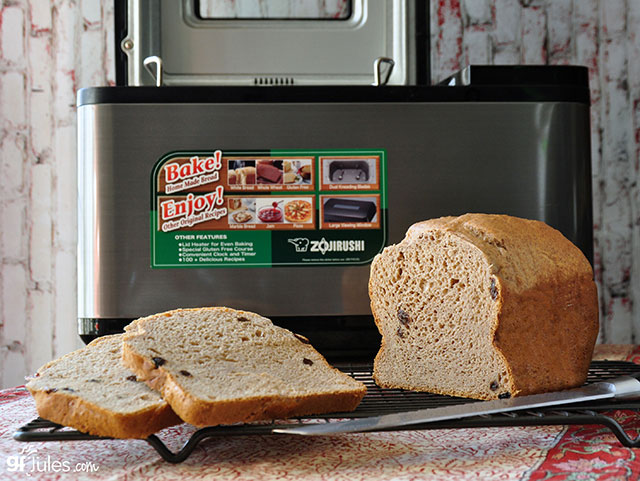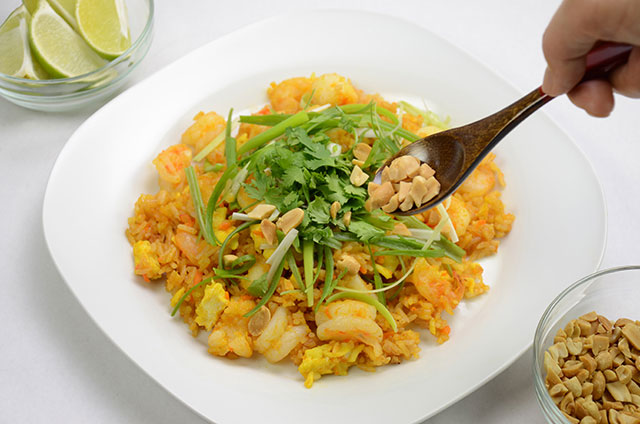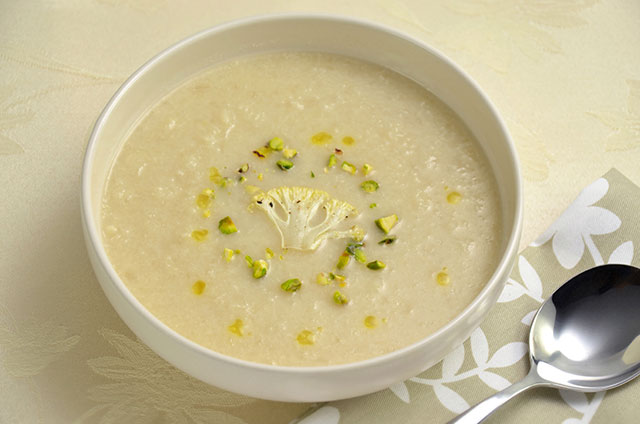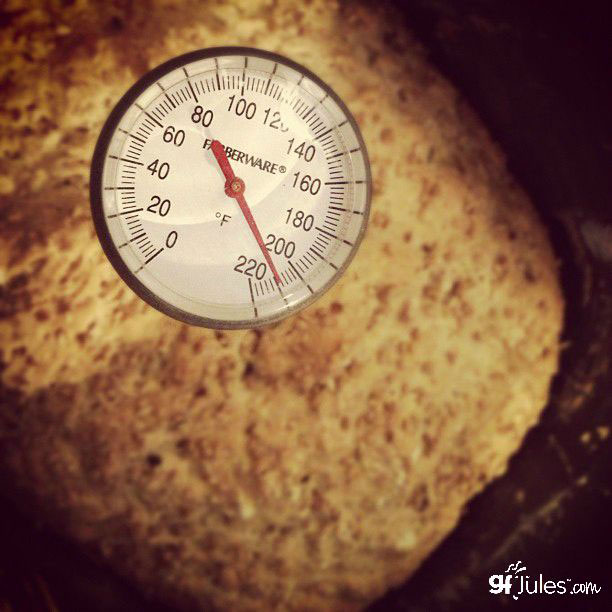
Once you’ve decided to go gluten free, you’ll need to start in your kitchen. Whether it’s large or galley, stocked or empty, your new gluten-free kitchen will be your safe zone. Your gluten-free kitchen will become the place where you can always find and make yummy and safe gluten free foods. When your kitchen goes gluten-free, too, then you won’t be tempted to “cheat” by eating gluten — because there won’t be other options.
It is important to first understand why a fresh beginning is so essential to going gluten free successfully. Because gluten is just one tiny ingredient in lots of foods, it’s not something you can actually see. It can lurk in crumbs, sauces, pasta…. Which means that anything in your kitchen that has touched these things (think toasters, pans, colanders, lunch boxes, utensils, counters, dish scrubbers, tea towels, etc.) may still have gluten on it or in it. When this gluten residue touches your gluten free food, gluten contamination (or gluten cross-contact) occurs.
So start fresh with any pots or pans or appliances that may touch your food if they are scratched or difficult to fully clean, and make an effort to rid your kitchen of gluten entirely (or banish it to its own cabinet for others to use). Knowing you have a safe place to prepare and to eat food for any meal of the day will help you successfully establish your new gluten-free lifestyle.
Once your kitchen is in order, it’s time to cook! Even if you’ve never considered yourself to be a baker or a chef, you don’t have to earn a degree to learn to prepare easy home cooked meals. Beyond proteins like meat, fish and chicken – which are gluten-free unless and until they are marinated, basted, or otherwise dressed with a sauce containing gluten – you’ll want to explore new ways to incorporate gluten-free grains and breads into your family meals for a nutritious and delicious diet.

Cooking with Gluten Free Grains
Rice:
Brown and white rice are just the most recognizable rice options you may already be familiar with. Jasmine, wild*, basmati and sushi are among the over 40,000 varieties of cultivated rice in the world. Whole grain rice contains bran which houses most of the nutrition in a grain of rice – vitamins, minerals, resistant starch and energy from carbohydrates — but even white rice offers carbohydrate energy and nutrition.
Get creative with rice as a side dish, salad, substitute for pasta (even in Pad Thai and Macaroni and Cheese!), filler for crab cakes and other patties, and even as a meal in itself. With a Zojirushi Rice Cooker, making rice is as easy as a push of a button, so dinner can be served on your schedule.
Quinoa:
Quinoa is another wonderful option that is prepared in much the same was as you would rice. It is one of the most popular ancient grains to have resurfaced lately as a superfood and a gluten-free hero.
First cultivated over 5,000 years ago, quinoa is technically a “pseudo-cereal,” not actually a grain. As seeds, it may be ground into flour like a grain and also prepared as you would any rice dish. The primary difference is that it is richer than rice in B-vitamins, vitamin E, minerals, fatty acids, calcium and fiber and it is considered a complete plant-based protein source.
Pick your favorite rice dish and substitute white, red or black quinoa in its place; see how you like it. The small grains cook even faster than most rice and it offers a nutty taste that many favor over blander grains. Serve as a hot breakfast cereal option, hot or cold side salad, or even as a binder in veggie burgers or other patties.
Millet:
Another delicious gluten-free seed is millet. This tiny grain alternative has been cultivated for thousands of years. It can be found as a flour or in its whole form which can be prepared much like rice or added to muffins, salads or other recipes as a substitute for a nutty crunch.
Millet is mild in flavor, and offers an abundance of magnesium and insoluble fiber. It is delicious as breakfast porridge or as an alternative to rice or potatoes as a side dish. Prepare in much the same way as you would rice.

Soups:
Many of us think of hearty bowls of chili or thinner tomato-based broths when we think of soup, but there is no end to the creative possibilities of what you can make in a pot.
Creamy cauliflower, vegetable lentil, green pea, and even cold soups like gazpacho can be made more quickly using a Zojirushi Stainless Steel Thermal Vacuum Cooking Pot or in a standard pot on your stove. Just be sure to verify all ingredients like stock and broth are gluten-free.
Oats:
Oats are a delicious way to add healthy fiber to your diet, but for those who are living gluten free, only certain oats are safe. It is essential to purchase only certified gluten free oats, grown under the purity protocol, to ensure there has not been cross-contact with gluten-containing grains. Independently certified gluten free oats can include traditional rolled oats, instant or quick oats, oat bran and steel cut oats.
Make a large batch of oatmeal in a Zojirushi Rice Cooker on the Porridge setting, and re-heat as you need quick breakfasts, snacks or even hearty side dishes. Or use Zojirushi stainless steel food jars to make yummy steel cut oats in the container with no fuss, then take the food jar with you to work or for travel. With a little planning, a warm and hearty meal of gluten free steel cut oats and fruit is better than any fast food or snack bar.
Baking Homemade Gluten-Free Breads:
If you’ve been unsatisfied with the gluten-free options available to you in pre-made or frozen breads at the grocery store, take heart! Making your own homemade gluten-free bread is the answer!
Even if you’ve never baked a loaf of bread in your life, you can bake gluten-free bread that tastes like real, soft and delicious bread and you’ll never have to settle for store-bought or hard, frozen gluten-free loaves again.
The reason why it doesn’t take an expert bread maker to make gluten-free bread is because all of the laborious steps involved in coaxing and babying gluten breads into life are absent in the making of gluten-free yeast bread. The steps are quicker and simple, and start-to-finish you can make a gorgeous loaf of gluten-free bread in about 2 hours.
The keys to remember about baking gluten-free bread are these:
- There is no kneading or punching down of the dough
- There is no second rise
- Shape the breads before rising
- Don’t over-work the dough
- You may use quick rise yeast for even faster rise times
- Check the temperature of your bread before removing it from the oven or bread machine – make sure it has reached 205 – 210° F or it’s not quite done baking

The absolute easiest way to gluten-free bread nirvana is by using a bread machine with gluten-free setting. Older machines didn’t offer the gluten-free option, and were pre-programmed for all the settings necessary to exercise gluten into holding its shape. Those same settings are actually counter-productive in baking gluten-free breads, which is why a gluten-free setting is so helpful.
However, it is possible to program some machines for your own gluten-free setting. If doing so, set your machine to a 20-minute mix cycle, a 45-minute rise cycle and a 60-minute bake cycle for a 2-pound loaf.
With any bread maker, the liquids should be at room temperature and go into the pan first, followed by all dry ingredients and lastly by the yeast, poured into a well in the center of the dry ingredients.
The Zojirushi Home Bakery Virtuoso® Breadmaker may become your best friend in gluten-free baking. It bakes a beautiful 2-pound loaf with an easy and reliable gluten-free setting and two mixing paddles for even distribution of dough.
Anything from gluten-free green tea bread to brown rice bread to raisin bread is possible … and easy with this machine. It even makes cakes and can mix pizza dough or other shaped bread dough for you to bake in the oven.
I actually travel with my bread maker so that I can have fresh-baked gluten-free bread with me wherever I am, and I don’t have to worry about clean up or a contaminated kitchen space. I regularly bake homemade bread in my hotel rooms and enjoy soft sandwiches or breakfast bread for several days.
The most important thing to remember about going gluten free is that it’s not about deprivation – it’s about delicious new and healthier possibilities. Doing more cooking at home may seem overwhelming at first, but you’ll soon find it is a more economical, nutritious and safe way to live gluten free. Feeding your family home cooked meals is also a wonderful way to spend more time together. Remember that your kitchen is your safe haven and be sure to keep it well stocked with ingredients to favorite recipes so you are always able to bake up something yummy!
*Wild rice is not actually rice, but is prepared in the same fashion and is a wonderful alternative to rice in the same dishes.
Leave a Reply